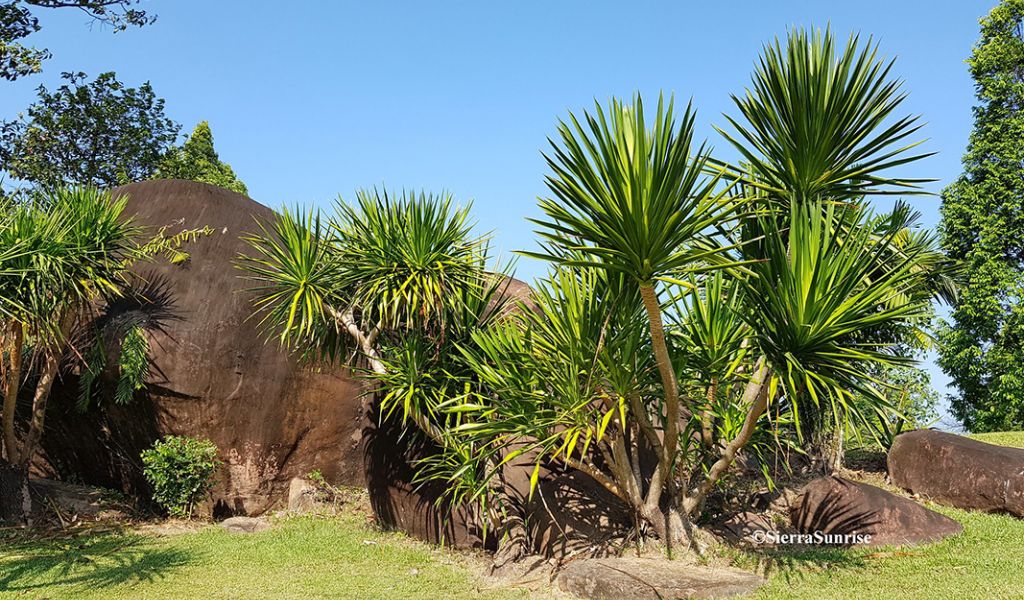ຕົ້ນຈັນໄດ / Dragon’s Blood Tree
APA 6th ed. ຕົ້ນຈັນໄດ / Dragon’s Blood Tree. (2021, August 27). Retrieved from https://www.phakhaolao.la/kb/0000008
MLA 8th ed. ຕົ້ນຈັນໄດ / Dragon’s Blood Tree. Pha Khao Lao, 27 August 2021, https://www.phakhaolao.la/kb/0000008.
Chicago 17th ed. Pha Khao Lao. 2021. "ຕົ້ນຈັນໄດ / Dragon’s Blood Tree." Published August 27, 2021. https://www.phakhaolao.la/kb/0000008.

Dracaena loureiroi Gagnep.
Dracaena saposchnikowii Regel
Draco saposchnikowii (Regel) Kuntze
Pleomele cochinchinensis Merr. ex Gagnep.
Vietnamese: bon bon, huyet giac, xo nha, dua dai, giang ong.
Chinese: xue jie.
English: dragon’s blood tree, cinnabaris.
Chandai is a small palm-like shrub, growing up to 10 m tall with a tough greyish trunk of up to 15 cm in DBH. The leaves, 5-7 cm wide and 50-70 cm long, are spirally arranged and grouped at the top of branches or crowded at the top. When the leaves drop, a distinct leaf scar can be seen. The inflorescence are large 1 m long flower clusters that bend downwards. Older axes are purple. The flowers grow in clusters of three to seven small, yellowish-white, fragrant flowers that are about 6-7 mm long. The round fruit is green, turning dark-purple when mature. It is 1 cm in diameter and has one to three seeds.
The red core wood and the resin from older plants have medicinal properties. Most of the harvested produce is exported to China, where it is used as an ingredient for ‘dragon’s blood’ (incl. Calamus spp.). This is a popular and expensive tonic which supports blood circulation, dissolves blood clots, and heals coughs, scurvy, and even wounds, while easing pain. The fruit is edible and also supplies a red dye. A green paint can be made from the leaves. Chandai is also often planted for its ornamental value.
